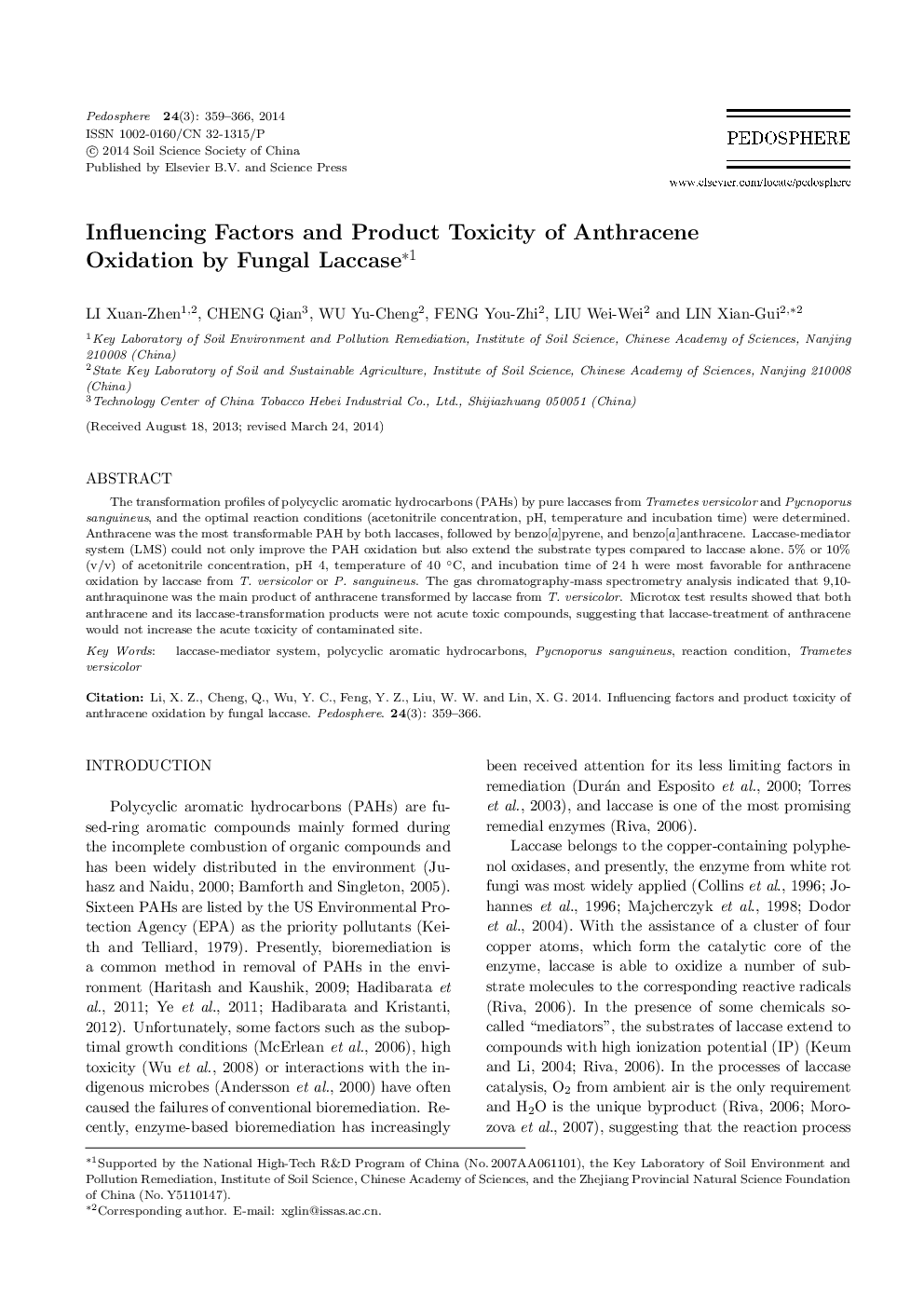| Article ID | Journal | Published Year | Pages | File Type |
|---|---|---|---|---|
| 4581477 | Pedosphere | 2014 | 8 Pages |
The transformation profiles of polycyclic aromatic hydrocarbons (PAHs) by pure laccases from Trametes versicolor and Pycnoporus sanguineus, and the optimal reaction conditions (acetonitrile concentration, pH, temperature and incubation time) were determined. Anthracene was the most transformable PAH by both laccases, followed by benzo[a]pyrene, and benzo[a]anthracene. Laccase-mediator system (LMS) could not only improve the PAH oxidation but also extend the substrate types compared to laccase alone. 5% or 10% (v/v) of acetonitrile concentration, pH 4, temperature of 40 °C, and incubation time of 24 h were most favorable for anthracene oxidation by laccase from T. versicolor or P. sanguineus. The gas chromatography-mass spectrometry analysis indicated that 9,10-anthraquinone was the main product of anthracene transformed by laccase from T. versicolor. Microtox test results showed that both anthracene and its laccase-transformation products were not acute toxic compounds, suggesting that laccase-treatment of anthracene would not increase the acute toxicity of contaminated site.
